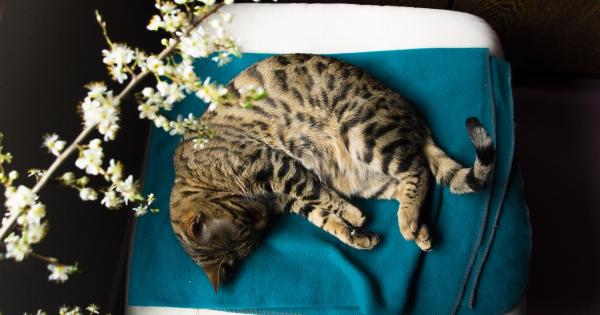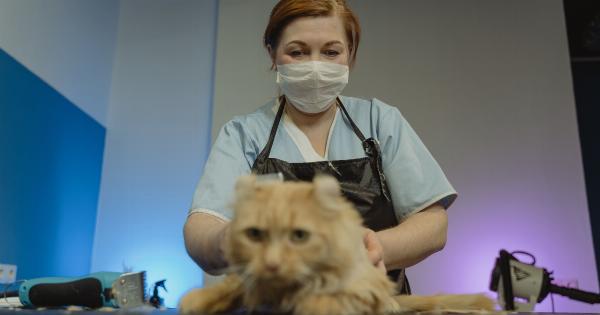While cats are known for their impeccable grooming skills, there are situations where a bath becomes essential.
Whether your furry friend has gotten into something messy or simply needs a routine cleaning, getting a cat to willingly take a bath can feel like an uphill battle. However, with the right approach and a little patience, you can make the bathing experience much more tolerable for both you and your beloved pet.
In this article, we will explore some effective strategies to win the battle of getting your cat to take a bath.
Understanding Your Cat’s Fear of Water
Before diving into the techniques to persuade your feline friend into the bathtub, it’s important to understand why many cats instinctively dislike water.
Domestic cats, descended from desert-dwelling ancestors, have retained certain behaviors and preferences. Water, being generally scarce in arid environments, is not something they have had to adapt to or feel comfortable around.
Moreover, cats typically have a dense, water-resistant coat that acts as a protective barrier. Their grooming routines involve meticulously licking themselves clean, and the idea of being submerged in water can be distressing for many cats.
With this innate aversion to water in mind, it is crucial to approach bathing in a way that minimizes stress and fear, ensuring your cat remains cooperative throughout the process.
Creating a Positive Bathing Environment
When it comes to bathing your cat, the right environment can make all the difference in their willingness to comply. Here are some tips to create a positive bathing experience:.
1. Choose a Quiet and Calm Location
Find a quiet room in your home where you can comfortably bathe your cat. A bathroom usually works well, as it is a confined space that prevents your cat from running off.
Ensure the room is warm and free from any loud noises or distractions that may add to your cat’s anxiety.
2. Gather the Right Supplies
Before beginning the bathing process, gather all the necessary supplies. This includes a shallow basin or sink, cat-friendly shampoo, a soft washcloth or sponge, and plenty of towels for drying.
Having everything within reach will help you maintain control and prevent unnecessary stress for your cat.
3. Gradually Introduce Your Cat to Water
Many cats are apprehensive about sudden changes, especially when it involves water. Instead of abruptly immersing your cat, introduce them to water gradually.
Start by allowing them to explore an empty bathtub or sink, rewarding their curiosity with treats or gentle praise. Over time, increase the amount of water they encounter until they become comfortable.
Building Trust and Positive Associations
Establishing trust and creating positive associations are crucial components of successfully bathing your cat. Here’s how you can accomplish this:.
1. Familiarize Your Cat with the Bathing Process
Before starting the actual bathing, allow your cat to get accustomed to the various steps involved. Begin by gently touching their paws, ears, and tail, slowly introducing the sensation of being handled in a bath-like manner.
Gradually work your way up, and always reward your cat for their cooperation.
2. Use Treats and Rewards
Positive reinforcement plays a significant role in shaping your cat’s behavior. Offer treats, a favorite toy, or verbal praise during and after each step of the bathing process.
By associating positive experiences with the bath, your cat will become more receptive to the idea over time.
3. Make Water Contact Gradual and Non-Threatening
When it’s time to wet your cat, use a cup or a gentle spray attachment to introduce water gradually. Start from the back and slowly work your way towards the head, ensuring you avoid the face and ears.
Keeping the water flow gentle and non-threatening will help prevent your cat from feeling overwhelmed.
Techniques for Handling Resistant Cats
Despite your best efforts, some cats may still put up a fight when it’s time for a bath. Here are a few additional techniques to manage resistant cats:.
1. Towel Wrapping
Towel wrapping is a method that involves snugly wrapping your cat in a towel, leaving only their head exposed. This helps to restrict movement and can make bathing easier.
It is crucial to ensure the towel is secure but not too tight, allowing your cat to breathe comfortably.
2. Use a Damp Washcloth
If your cat is extremely fearful of water, consider using a damp washcloth instead. Gently wipe them down, mimicking the bathing process without subjecting them to direct contact with water.
This can help familiarize your cat with the sensations and gradually build their tolerance over time.
Post-Bath Care and Comfort
Once the bath is complete, it’s essential to focus on providing comfort and reassurance to your cat:.
1. Thoroughly Dry Your Cat
Using a soft towel, gently dry your cat’s fur, ensuring you remove as much moisture as possible. If your cat tolerates the sound, you may also use a hairdryer set on the lowest heat and speed settings.
However, be cautious not to stress or scare your cat with the loud noise from the dryer.
2. Offer Treats and Praise
After the bath and drying process, reward your cat with treats or their favorite meal. Positive reinforcement will help reinforce the positive associations created during the bathing experience, making it easier in the future.
3. Provide a Safe and Comfortable Space
After a bath, your cat may feel vulnerable or stressed. Ensure they have a warm, quiet, and comfortable space where they can retreat and relax. Providing their favorite blanket or bed can help them feel secure and at ease.
Conclusion
Bathing a cat can be a challenging task, but with patience, persistence, and the right approach, it is possible to win the battle.
Understanding your cat’s fear of water, creating a positive bathing environment, building trust and positive associations, and using techniques for resistant cats are all essential strategies to help your furry friend become more comfortable with bath time. Remember to always prioritize their well-being and make the experience as positive and stress-free as possible. With time, your cat may even learn to tolerate or even enjoy the occasional bath.































